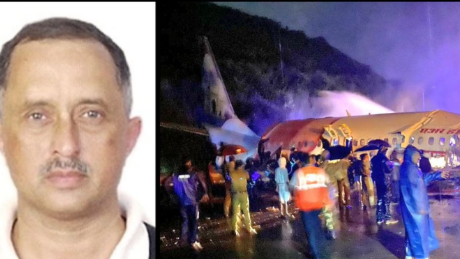

Kozhikode: On the rain-soaked evening of August 7, 2020, Air India Express Flight 1344 approached Kozhikode's Calicut International Airport carrying 190 passengers and crew members, most of them Indian nationals returning home under the government's Vande Bharat repatriation mission during the COVID-19 pandemic. What should have been a routine landing became one of India's most devastating aviation accidents in recent memory, claiming 21 lives and raising serious questions about the safety of tabletop runways during adverse weather conditions.
The Boeing 737-800 aircraft, operating as flight IX-1344 from Dubai to Kozhikode, encountered heavy monsoon rains as it attempted to land at the airport's challenging Runway 10. At approximately 7:41 PM local time, the aircraft touched down but failed to stop within the runway's confines, overrunning the strip and plunging into a valley approximately 35 feet below. The impact broke the fuselage into two major sections, with the cockpit area bearing the brunt of the damage.
Among the fatalities were Captain Deepak Vasant Sathe, a former Indian Air Force pilot with over 10,000 flying hours, and First Officer Akhilesh Kumar. Both pilots died while attempting to control the aircraft during the critical moments of the accident. Captain Sathe, aged 58, was posthumously praised for his efforts to minimize casualties, with aviation experts noting that the relatively low death toll, given the severity of the crash, suggested skillful handling during the emergency.
The Aircraft Accident Investigation Bureau (AAIB) of India conducted an extensive investigation into the crash, releasing its final report in July 2022. The investigation revealed a complex interplay of factors that contributed to the tragedy. Primary among these was the crew's decision to continue the approach despite deteriorating weather conditions, including heavy rainfall and crosswinds that exceeded recommended limits for safe landing operations.
The report highlighted that the aircraft was experiencing a tailwind component during its approach, which significantly increased the landing distance required. Combined with the wet runway conditions caused by continuous rainfall, the aircraft's braking effectiveness was severely compromised. The investigation found that the pilots had made two previous attempts to land but executed go-arounds due to unstable approaches, finally attempting the fatal third approach.
Calicut International Airport's status as a "tabletop" airport—built on a plateau with steep drops on either side of the runway—amplified the consequences of the runway overrun. Unlike conventional airports with overrun areas and safety zones, tabletop airports offer little margin for error. The investigation noted that while the airport met international safety standards, the challenging topography and monsoon weather conditions created additional risk factors that required enhanced operational procedures.
The tragedy occurred during the height of the monsoon season in Kerala, when airports across the region routinely experience challenging weather conditions. Weather data from the time of the accident showed heavy rainfall, with visibility fluctuating and wind conditions that were marginal for safe landing operations. The AAIB report emphasized that the crew should have declared the weather conditions unsuitable for landing and diverted to an alternate airport.
In response to the accident, aviation authorities implemented several safety measures across Indian airports, particularly those with challenging terrain features. These included enhanced pilot training for monsoon operations, improved runway surface treatments for better water drainage, and stricter adherence to go-around procedures when weather conditions deteriorate beyond safe limits.
The crash also prompted renewed discussions about infrastructure improvements at regional airports serving the large Indian diaspora in the Gulf region. Kozhikode airport, which serves the Malabar region of Kerala with its significant population of overseas workers, handles numerous flights from Middle Eastern destinations, making safety enhancements critical for continued operations.
The investigation's findings led to recommendations for improved crew resource management training, better weather monitoring systems at airports, and enhanced coordination between air traffic control and flight crews during adverse weather conditions. The Aviation Ministry also mandated additional safety assessments for all tabletop airports across India, ensuring that operational procedures adequately addressed the unique risks posed by their geographic locations.
The Air India Express Flight 1344 accident remains a sobering reminder of the complex challenges facing aviation safety in a country with diverse topography and extreme weather conditions, serving as a catalyst for ongoing improvements in Indian aviation safety standards.